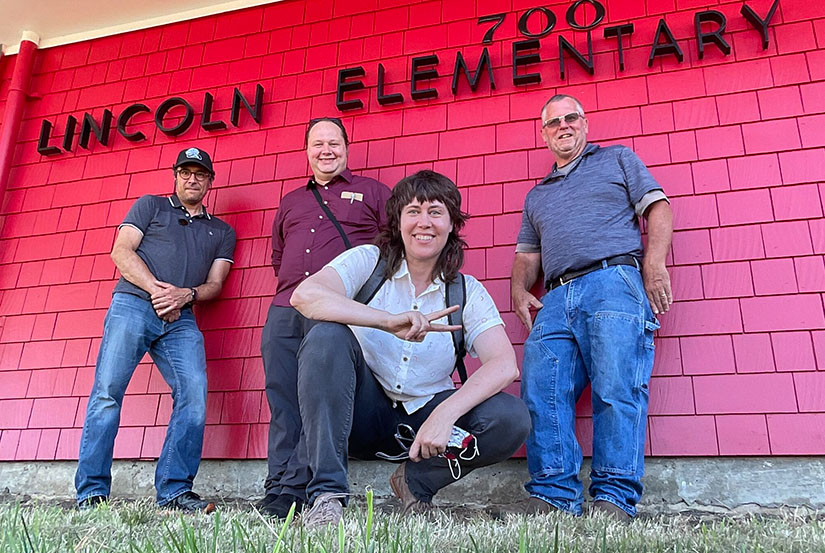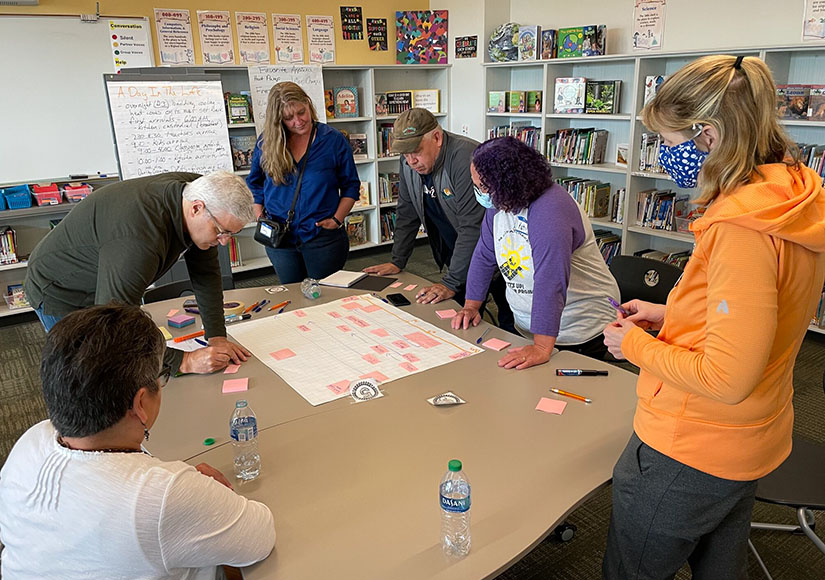IN² Demonstration: Getting Control Outside of the Lab

For its 10th cohort, the Wells Fargo Innovation Incubator (IN2) formed an all-demonstration group where each participant would scope and perform a demonstration of their technologies as part of the program.
The IN2 startups will complete their demonstrations over the next year or two, helping them in their goal to see their technologies gain market acceptance. Giving each startup a real-world opportunity for its technology backed up with technical assistance from NREL helps de-risk new customer acquisition by providing a concrete example of success.
For Principal Investigator Thibault Marzullo, the Community Energy Labs (CEL) project marked several beginnings. Having joined the National Renewable Energy Laboratory (NREL) only last February in the commercial buildings group, it was the first time Marzullo served as a PI on a project. It also marked a major step forward in getting technology out of the lab and into the world.
“CEL is proposing a new method for building controls with a novel framework,” Marzullo said. “These methods existed for the past 30 years now, but they were not successful because of the need to customize controls for each individual building, so they never got out of the lab. What CEL proposed is that rather than having the building operator hire someone to come to their building, they are centralizing the controls for it. CEL hosts the controller on their servers and monitors them, which allows them to more or less use the same controller on each building.”
For CEL founder and CEO Tanya Barham, it is important that she is sure they are doing a good job.
“I’m a pessimist by nature. If I see a theoretical path, I will take it, but I don’t necessarily believe it will work until my team and I have done it ourselves,” Barham said. “However, the data is looking pretty encouraging to me from our first sites. The demonstration’s really going to help us show how our algorithms perform in a variety of locations. It’s very exciting.”
CEL’s model-predictive control uses a physical model of a building to manage energy to its optimum while keeping residents comfortable. It is an integrated service with a hardware component and a software component. For every building, the team looks at the underlying topology and makes some decisions. CEL can work with any type of communicating thermostat, or they can retrofit existing thermostats with smarter versions. If the next-generation hardware is already in place, CEL works its magic with only existing thermostats, a meter or two, and sometimes a small industrial computer.
“Our system controls smooth out preexisting power spikes. This lets us maintain a very good thermal comfort range in the building at a much lower price for energy and demand prices,” Barham said. “We see what we have available on-site, and that determines the algorithm and control framework that we select for each customer.”
CEL began its first demonstration in Contra Costa, California, in early October 2022. The first testing and validation campaign will go for 15 weeks, with another campaign slated to begin in the 2023 cooling season. More installations are continuing into next year. In November 2022, CEL will put in an installation for Tacoma, Washington’s, Franklin Pierce School District, with another seven installations in the Pacific Northwest during the week of Thanksgiving. CEL must work when school is not in session because in some cases it requires a brief power shutoff.

“We have signed contracts with more schools, but we want to make sure we’re not rushing things,” Barham said. “We are always placing occupant comfort and operator ease at the forefront of what we do. That means giving our early adopters time to experience the product and gain trust in the technology. For our early installs, that trust has to come first. That also means sufficiently testing newer control algorithms before we deploy in the field.”
For that purpose, as CEL continues with installations, Marzullo’s team at NREL will use software to test the controllers and different algorithms. They will use building models to see if the lab controllers will be a good fit and use real data collected during CEL’s installations at more than 20 school campuses across the West Coast to verify whether the results hold true in real life.
“What we’re doing to help their demonstrations is really helping them adapt these controllers as case studies,” Marzullo said. “There is a part that is a boots-on-the-ground part, and the other part is the software part, and that’s what we’re doing. We help them tune their framework and make sure it works correctly and monitor their performance to see how they can make it better.”
CEL’s algorithms also help optimize a building’s controls to use a low fraction of nonrenewable energy sources, as well as look at air quality, something that has more prominence because of COVID-19 and wildfires in the American West.
“It ensures the least amount of outside particulates get in the building. It helps not just save money, not just save energy, but to choose how the building uses energy and manages air quality,” Marzullo said. “Once they prove they are viable, they can go further and start a sci-fi movement where the building can truly become smart. It’s just the beginning, and that’s what makes it exciting. If they are successful, it really means something awesome.”
Barham likened CEL to a bake shop.
“By April, we will have our foundational formulas, but it’s like baking a cake—there’s always variation for different buildings. NREL gives us good information for testing recipes and validates that our core recipes are good,” she said. “It’s game changing. It’s a big help.”
Learn more about the IN2 program.
Explore more stories in the IN2 Demonstration series:
Last Updated May 28, 2025
